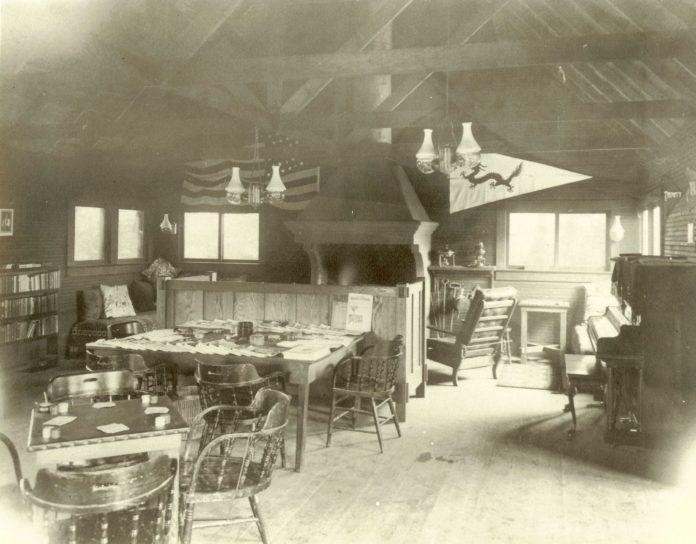Eustace Paul Ziegler boarded the S.S. Yucatan for Cordova and after a week’s voyage in January storms and snow across the Gulf of Alaska, followed by a three-day anchorage waiting for clouds to clear the passage, the anchor was finally weighed, and the S.S. Yucatan sailed into Cordova’s harbor and Ziegler’s Alaskan ministry and adventure began.
Though Episcopal Bishop Peter Trimble Rowe had come to Alaska to serve primarily its Native people, the Klondike gold rush turned his mission into a two-pronged effort. Travels among transient miners, traders, construction workers, and gamblers in Alaska’s boom towns had quickly convinced him of the need for a ministry to the non-Native population as well.
Bishop Rowe was all too aware, however, of the here-today, gone-tomorrow fortunes of many of these boom communities, and he soon saw that building a local church was not necessarily the most useful initial expenditure of limited resources in such towns. He noted the need for constructive recreational opportunities, reading rooms, and alternative gathering places to the rampant saloons on this new frontier. And from this, the Red Dragon was born.
Ziegler and the Red Dragon were a remarkable fit. Paid $750 a year, the young lay missionary seems to have felt almost immediately at home in the new community and in his clubhouse. Perhaps the reading room for Great Lakes sailors provided enough training to make Eustace feel completely at ease in this similar railroad community.
He staged boxing bouts on Saturday nights. He appealed constantly for more books and magazines, especially current ones. Though free to all and requiring no membership, a strictly honorary membership could be had through voluntary donation of a dollar a month. These contributions helped support an open box in the club always containing some money, from which those down on their luck could borrow a few dollars and repay it when able.
The club was supported by the Episcopalian Board of Missions in New York, local and visitor contributions and proceeds from special events. Several sources relate a particularly memorable performance that captures much of the spirit and character of the both the Red Dragon and its clientele.
“One rainy Sunday night last fall a young man tramped into the Red Dragon about nine o’clock from a surveyor’s camp fifty miles inland. ‘I couldn’t stand it any longer,’ he said, ‘I just had to get to a piano.’ He played and played well with the eagerness and delight of a very hungry man at a good dinner till midnight, when the place was closed. Next morning, he was sitting on the step when they came to open the doors. He played till noon without stopping. Then rising, he put on his slicker and sou’wester and waving a laughing goodbye to the roomful of listeners started on his long tramp back to camp.”














